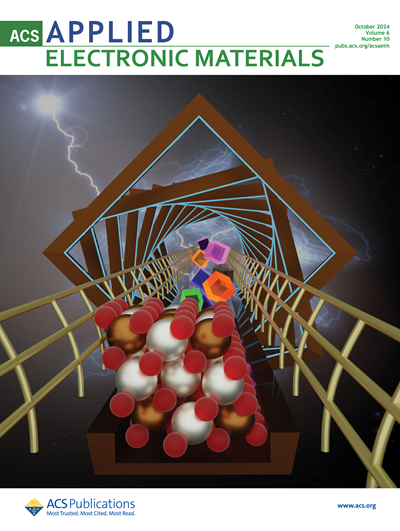用于人体运动监测的柔性导电水凝胶应变传感器和三电纳米发电机
IF 4.7
3区 材料科学
Q1 ENGINEERING, ELECTRICAL & ELECTRONIC
引用次数: 0
摘要
采用冻融法使 PVA/海藻酸钠水凝胶凝胶化,并将其浸泡在氯化钠水溶液中以获得更好的机械和电气性能,从而制成了一种柔韧且导电的 PVA/海藻酸钠水凝胶。系统研究了不同浓度的氯化钠水溶液的影响。经过优化,PVA/SA-3 水凝胶具有 4.1 S/m 的高电导率和优异的机械性能。此外,还探讨了该水凝胶作为应变传感器的能力,以区分不同的人体活动。在运动过程中使用的三电纳米发电机(TENGs)需要具有柔韧性,因为设备经常处于动态状态。然而,用于 TENG 的传统电极材料不够灵活,限制了其潜在应用。为了解决这个问题,我们设计了一种使用 PVA/SA-3 水凝胶作为电极材料的柔性 TENG。此外,我们还设计了一种人体运动监测系统,该系统由水凝胶 TENG(H-TENG)、微控制器单元和智能手机组成。该运动监测系统可在智能手机上同时显示运动时的总步数和步频,显示了其在运动传感领域的巨大潜力。本文章由计算机程序翻译,如有差异,请以英文原文为准。

A Flexible, Conductive Hydrogel for Strain Sensor and Triboelectric Nanogenerator toward Human Motion Monitoring
A flexible and conductive PVA/sodium alginate hydrogel was made using the freeze/thaw method for gelation and immersing in NaCl aqueous solution for better mechanical and electrical properties. The effects of the different concentrations of NaCl aqueous solutions were systematically investigated. After optimization, the PVA/SA-3 hydrogel shared a high conductivity of 4.1 S/m and excellent mechanical properties. Additionally, the hydrogel’s ability to work as a strain sensor to distinguish different human activities was also explored. Triboelectric nanogenerators (TENGs) which are used during exercise need to be flexible because the devices are frequently in a dynamic state. However, traditional electrode materials for TENGs are not flexible enough, limiting their potential applications. To address this issue, we designed a flexible TENG using the PVA/SA-3 hydrogel to work as the electrode material. Furthermore, we designed a human motion monitoring system consisting of a hydrogel-based TENG (H-TENG), a microcontroller unit, and a smartphone. The motion monitoring system can display the total steps and the cadence during exercise on the smartphone simultaneously, demonstrating its great potential in sport sensing fields.
求助全文
通过发布文献求助,成功后即可免费获取论文全文。
去求助
来源期刊

ACS Applied Electronic Materials
Multiple-
CiteScore
7.20
自引率
4.30%
发文量
567
期刊介绍:
ACS Applied Electronic Materials is an interdisciplinary journal publishing original research covering all aspects of electronic materials. The journal is devoted to reports of new and original experimental and theoretical research of an applied nature that integrate knowledge in the areas of materials science, engineering, optics, physics, and chemistry into important applications of electronic materials. Sample research topics that span the journal's scope are inorganic, organic, ionic and polymeric materials with properties that include conducting, semiconducting, superconducting, insulating, dielectric, magnetic, optoelectronic, piezoelectric, ferroelectric and thermoelectric.
Indexed/Abstracted:
Web of Science SCIE
Scopus
CAS
INSPEC
Portico
 求助内容:
求助内容: 应助结果提醒方式:
应助结果提醒方式:


